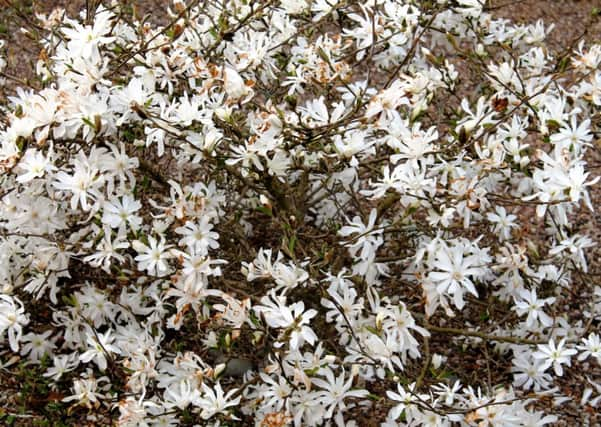It’s stellar in springtime


But right now, Magnolia stellata, the star magnolia, a little gem worthy of any garden, leads the way.
In early spring it is clothed with numerous star-shaped white flowers. It likes a sheltered site out of cold winds and where the soil is moist, well-drained and fertile. When planting, tease apart the roots and spread them out in the planting hole; failure to do is likely to produce a sickly tree with few blooms and a shortened life. Expect a mature specimen to reach 10ft in height.
Advertisement
Hide AdAdvertisement
Hide AdMost people love a magnolia but the vast majority of gardeners would probably think twice about growing one of Stellata’s bigger brethren because of their reputation for being a tad on the difficult side and having a tendency for growing quite large.
But if there is room, some magnolias – particularly M soulangiana – are at their best in late March and April, and are worth cultivating. The colours of the great waxy blooms range from pure white (Alba superba) to rosy red (rubra).
M soulangiana does have one big drawback – and that’s its size. It may start off small, but given the right conditions it will spread upwards and outwards until it’s no longer guaranteed to be flavour of the month in an average-sized garden. It’s far better to plump for M stellata.
But for something really special, nothing can beat M grandiflora, which, as its name suggests, is something special.
Advertisement
Hide AdAdvertisement
Hide AdIt needs space because it can reach 20 feet in height and spread to make room for its bright green leathery leaves and fantastically fragrant creamy-white blooms. You’ll need a big garden for a tree with such a growth record, but if you have the space and want to impress the neighbours – think Magnolia grandiflora.
If you’re not quite as forward, there’s always the Sweet Bay, aka M virginiana, which is reputed to have been the first of the American imports.
It is more self-conscious than many of its showy brethren, content to produce small cream-white flowers from June through till September. But what it lacks in size it make up for in fragrance.
All magnolias have several things in common – they like a fertile soil and a spot where the sun is likely to shine for most of the day. And they don’t like chalk around their roots (although M grandiflora seems to be able to cope).